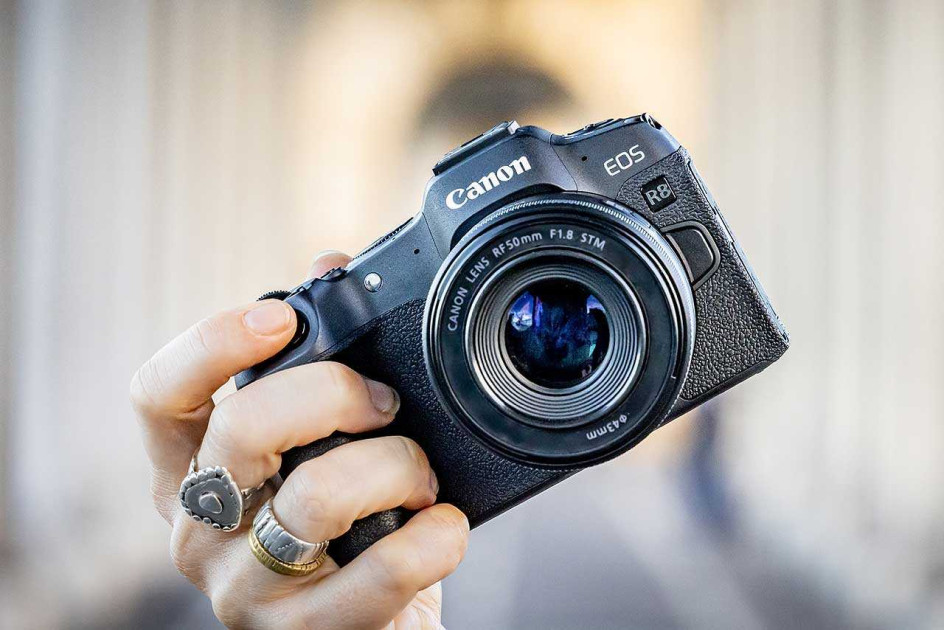
The similarly named and priced EOS R8 and the EOS R7 were released within 6 months of each other as Canon seeks to dominate the mirrorless market, but which one should you choose?
We’re bringing you this in-depth head-to-head comparison between the new Canon EOS R8 and its cheaper sibling, the EOS R7, to find out what the key differences are between them.
You can also read our detailed Canon EOS R7 review to find out exactly what we think of that camera.
Sensor
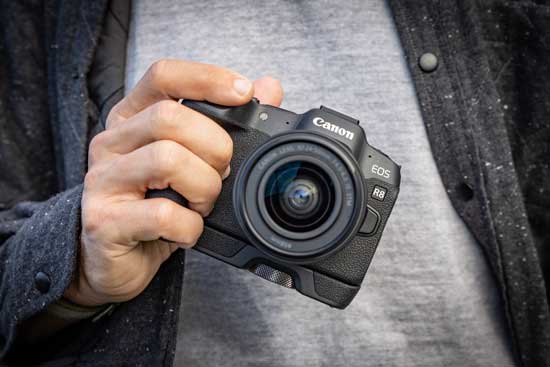
The size of the sensor is the single biggest difference between these two cameras.
The EOS R7 has a 32.5 megapixel APS-C cropped CMOS sensor, whereas the new EOS R8 has a 24.2 megapixel full-frame CMOS sensor.
So you get more megapixels on the R7, but a larger sensor and thus larger pixel size on the R8, which should deliver better image quality especially in low-light when using the higher ISO values.
Both models use the very latest Digic X processor.
ISO Speed
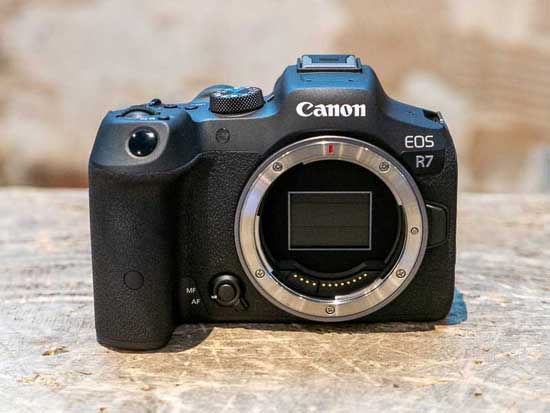
The native ISO range of the EOS R7 runs from 100-32,000, which can be expanded to ISO 51,200.
On the R8 model, the ISO range runs from 100-102,400, which can be expanded up to ISO 204,800 and down to ISO 50.
So the full-frame camera provides a much larger ISO range, especially at the top end, which again potentially makes it more versatile in low-light situations.
Video
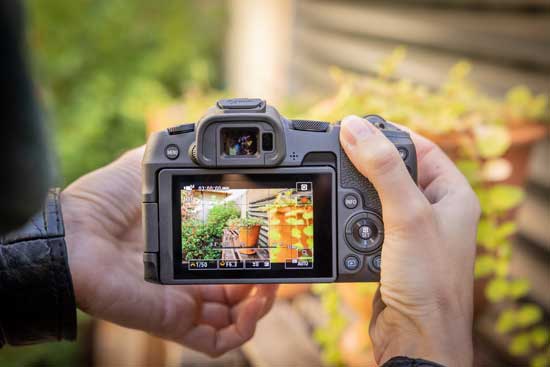
The Canon EOS R8 can record 4K video up to 60p in 10-bit with no crop, achieved through oversampling from 6K.
Slow-motion footage is also available with AF support using Full HD at up to 180fps.
It also features digital image stabilisation for movies, a 3/5 sec pre- recording function, C-Log3 for higher dynamic range, and unlimited recording times.
The EOS R7 has a slightly less capable video mode. It also offers 4K/60p recording in 10-bit with no crop, but only does so officially for up to an hour.
Slow-motion footage is available with AF support using Full HD, but only up to 120fps.
It doesn’t have the 3/5 sec pre- recording function, but does feature in-body image stabilisation for both movies and stills.
The intentionally flat Canon Log 3 colour profile is again available to provide extra flexibility for colour grading in post-production.
Autofocus

The Canon R7 features the next generation Dual Pixel CMOS AF II focusing system as used by the flagship R3 and R5 full-frame cameras.
It has 651 automatic focus points and 5,915 manually selectable AF points with r 100% frame coverage in Auto selection mode and 90% vertical and 100% horizontal in manual selection.
Impressively the EOS R7 can focus in light levels as low as -5EV (when used with an F1.2 lens) or with maximum apertures as small as f/22, which enables autofocus even when using ultra telephoto lenses with teleconverters.
Thanks to its Digic X processor, the EOS R7 offers exactly the same deep-learning artificial intelligence based automatic face, eye and animal AF tracking modes as the R3, R5 and R6 models.
Therefore Canon R7 can recognise and track eyes from much further away than previous models, and it works even if the person is wearing a mask, helmet or sunglasses. Subject tracking works for humans and also dogs, cats and birds, the latter even in flight.
The EOS R7 also has the ability to track vehicles, including cars and motorbikes. What’s more, if the driver is wearing a helmet, the AF system will lock on to that, ensuring that the most important subject is in focus.
The R8 uses the same Dual Pixel CMOS AF II focusing system and offers 4,897 manually selectable and 1,053 automatically selectable AF points with 100% frame coverage.
The EOS R8 can focus in light levels as low as -6.5EV (when used with an F1.2 lens), which is a real boon to low-light shooting.
It has even better deep-learning based automatic face, eye and animal AF tracking modes than the R7.
The improved AI tracking additionally recognises horses, aircraft and trains as well as the various subjects that the R7 can automatically detect.
Cleverly, if the camera is set to Face-only AF and the tracked subject exits the frame, it won’t automatically then focus on the background, instead re-focusing on the face when it reenters the scene.
The newer model also features a special auto-select mode for subjects, plus the same Flexible AF mode from the EOS R3, and eye tracking functions in all AF modes.
Burst Shooting
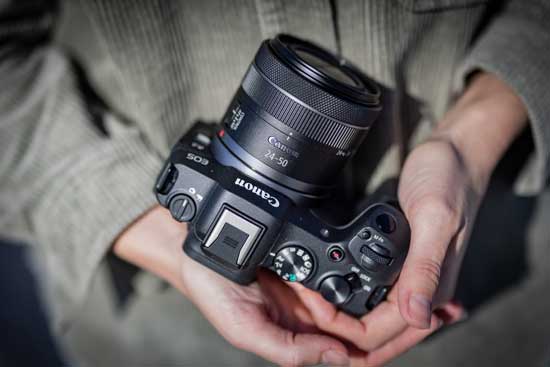
The EOS R7 camera can shoot at a blistering 30fps when taking advantage of the silent electronic shutter, complete with full AF and AE tracking. If you prefer to use the mechanical shutter, the R7 offers a burst rate of 15fps.
The Canon R8 better that by offering a class-leading burst shooting rate of 40fps with the electronic shutter. It can shoot at 12fps with the mechanical shutter, with both modes supporting full auto exposure (AE) and auto focus (AF) tracking.
The R8 additionally has a useful Raw burst mode, in which the camera can shoot at 30fps with 0.5 seconds of pre-capture built-in, which should help even more with capturing that decisive sporting or wildlife moment.
Body and Design
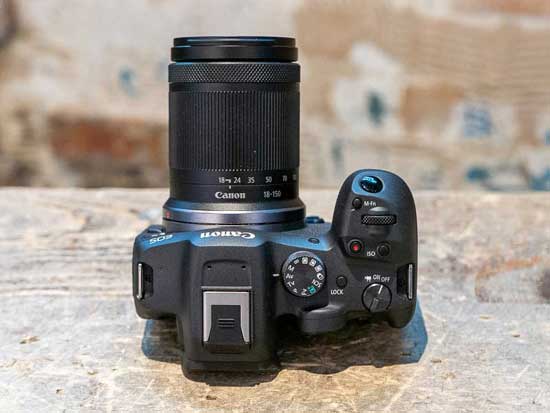
The design of these two cameras is quite different. Despite having a physically smaller sensor, the APS-C EOS R7 is actually bigger and heavier than the new R8, which much more closely resembles the EOS RP model.
The R8 is now the lightest, most compact full-frame camera that Canon currently offer, weighing in at just 461g including a memory card and battery.
In contrast the R7 with its bigger, much deeper grip weighs in at 530g body-only or 612g with both a battery and memory card fitted.
The R7 has a very similar top plate layout to the EOS R6/R6 II full-frame models, whereas the R8 is much closer in design to the RP.
The R8 also sacrifices having an AF joystick on the back in the pursuit of simplicity and low weight, whereas the R7 does offer this important control with the debut of a combined AF point selector and rear control wheel.
IBIS
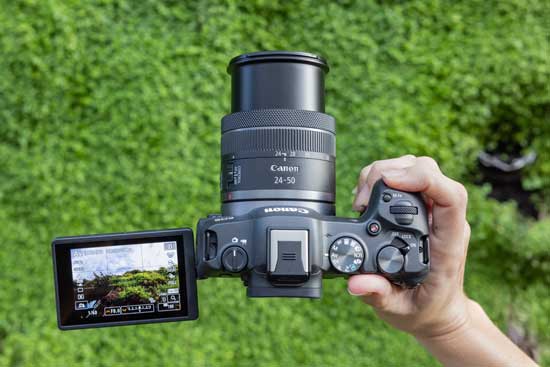
The Canon R7 provides up to 8-stops of image stabilisation available via a combination of the camera’s in-body Image Stabiliser which works in tandem with the attached lens’ own stabilisation system.
In stark contrast the EOS R8 does not have IBIS at all, only providing digital IS for movies in-camera. So if IBIS is a must-have feature for you, the EOS R7 is the clear choice.
Viewfinder
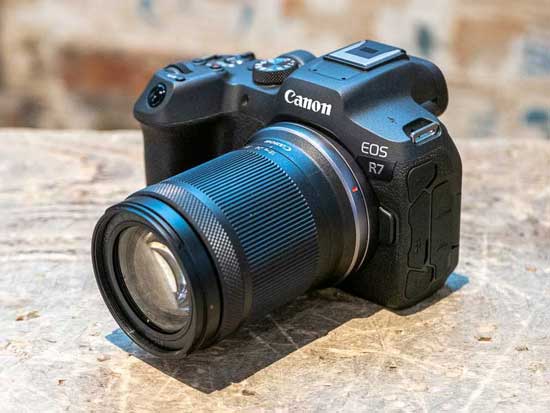
The EOS R7 has an integrated OLED electronic viewfinder with 2.36M dot resolution, magnification of 1.15x and 120fps refresh rate.
The R8 has exactly the same higher-resolution 3.69 million dot EVF as the EOS R6 and R6 II, which similarly operates up to 120fps for minimal lag when shooting fast-moving subjects.
The new model incorporates a special OVF simulation mode, which uses HDR technology to simulate a more “real-world” view of the scene. The R7 does not support this feature.
LCD Screen
Both models use the same 3-inch, 1.62 million dot, vari-angle LCD screen which tilts out to the side and faces forwards for more convenient vlogging and selfies.
Memory Cards
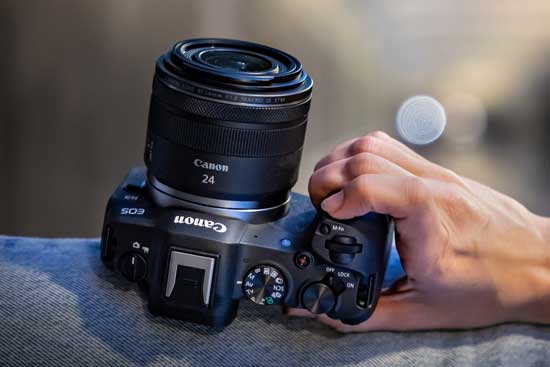
The larger R7 model supports two SD UHS II cards via dual slots, with the ability to record to both cards simultaneously, whereas the smaller R8 can only squeeze in one card slot.
Battery Life
Both cameras benefit from using the same LP-E6NH battery, a recently introduced longer life battery that is also supplied with both the EOS R6 and EOS R6 II cameras.
Connectivity
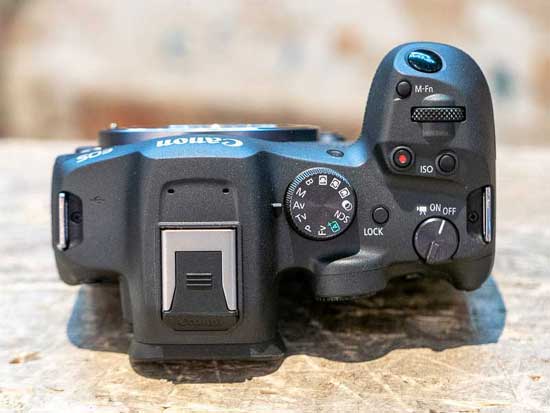
Both cameras feature built-in Bluetooth and 2.4Ghz Wi-Fi and can be easily connected to a smartphone and networks allowing high-speed file sharing and FTP/FTPS transfer.
They can also be remotely controlled using Canon’s Camera Connect 3.0.0 and EOS Utility apps and tethered to a PC or Mac via Wi-Fi or high-speed USB 3.2. They also offer the ability to operate both as a webcam or for live streaming via UVC/UAC.
Price
The Canon EOS R7 is priced at £1,349.99 / €1,649.99 / $1,499.00 body only in the UK, Europe and USA respectively.
The new EOS R8 is more expensive at £1,699 body only in the UK.
Conclusion
Looking at the product names, you’d perhaps be forgiven for thinking that the R7 is a step-up model from the new R8, but rather confusingly that’s not the case thanks to the use of different sensor sizes in each one. The R8 actually out-performs its cheaper sibling in most regards, although it has a much smaller body that as a consequence sacrifices in-body image stabilisation, a key feature that the R7 notably offers.
So what do you think? Would you choose the full-frame Canon EOS R8 or the APS-C EOS R7? Leave a comment below!

